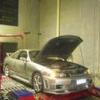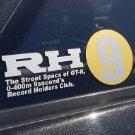Finishing Up Forged Cp Piston Rb30 Build, Few Q's
Announcements
-
Similar Content
-
Latest Posts
-
Ok so I have sorted everything with my uniclutch and i can offer up a bit of feedback and some things that might help others. I found problems with factory damper line. Weird shit and had trouble with peddle adjustment I used this https://au.gktech.com/products/r33-gts-t-skyline-braided-clutch-line?_pos=2&_sid=22b01b9b9&_ss=r Also when adjusting peddle leave a bit of play. You can get into a over stroke condition easy.. Make sure you can push the slave forward after adjusting to confirm fluid can return to master then you will need to pump it up heaps…..not sure why but that’s how it is. last thing the splined adapter is machined perfectly. If your input shaft is old like mine was I would put a bit of valve grinding paste on it and stroke it like a 15 year old. Just to give it a tad more clearance and to better match it to the spline. reason is on a near flat shift I have had situation where the peddle returns a millisecond after you lift from the clutch. No slip or anything but I reckon this is due to tolerance on the spline being way tighter than stock clutch and binding for a sec. I think this will go away but also my spline was old. Box is old so I guess I should have checked better. It’s a super neat fit. it feels light as and holds awesome without any noise
-
My Fuga Hybrid is JDM, 2014 model but very similar to the V37 from the looks of things..same platform just physically larger and very comfortab;e
-
Was that Australia Delivered Duncan? Does it have siren etc? I used to have remote start on an old 32 two decades ago, it was a cool feature. I used to wake up early in winter for work. Start it and by the time i was out the door a few minutes later the engine was warmed up and the heaters had the car toasty. It was great. I don’t mine the ambience lighting. I drive a western star and it has footwell lights and ambient lighting and it’s great! From the pics of seen of them installed in a skyline I think it’s a nice touch
-
re the security system, my Fuga/Q70 has the factory option where the puddle lights in the mirrors turn on when the prox key is detected, it was clearly dealer fitted and has a switch in the lower dash to disable it....it didn't have remote start but TBH I don't really miss that, I had it in the Stagea originally but never used it....we don't often have to warm the car up in the snow before we get in for Australia. And the Fuga also has the illuminated footwells, sounds like a useless feature but I actually quite like the indirect light within the car, it was a nice addition
-







Recommended Posts
Create an account or sign in to comment
You need to be a member in order to leave a comment
Create an account
Sign up for a new account in our community. It's easy!
Register a new accountSign in
Already have an account? Sign in here.
Sign In Now